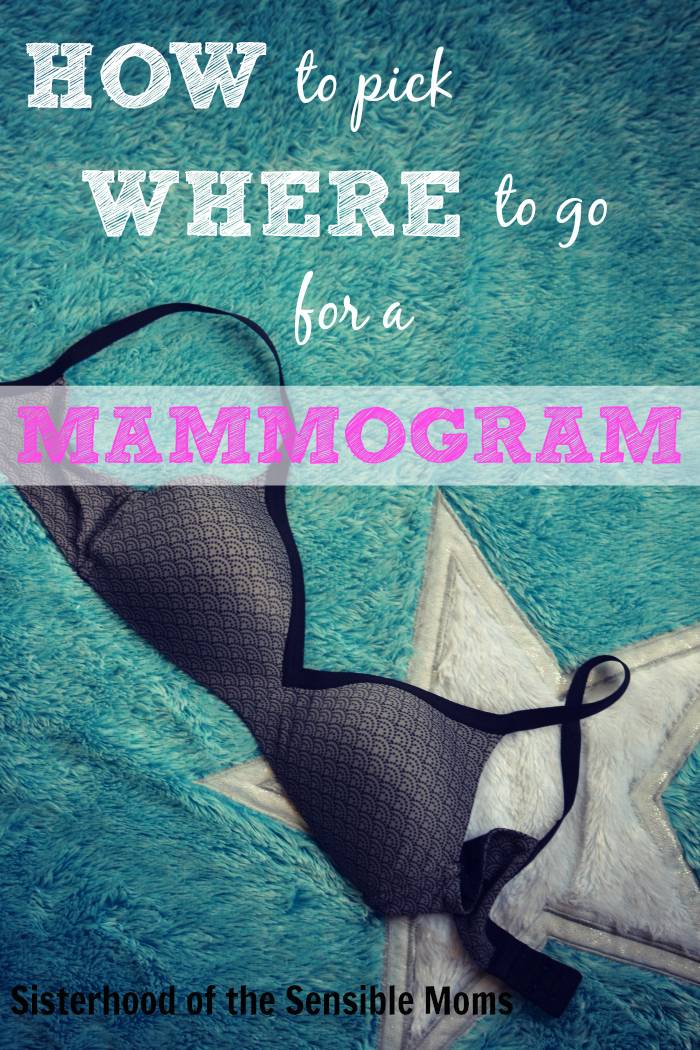The PR is good enough that we all know we have to take care of The Girls. You know . . . your milk bags, sweater hams, bee stings, tas-tas, boobies, or if we’re being absolutely mature and proper–your breasts.
The first step is knowing when to get a mammogram. This is thankfully so straightforward that even tabloids and random websites get it correct (although government tasks forces did try to muddy the waters), but I like to go straight to the horse’s mouth. Although “teat” might be the more apropos body part in this case.
The American College of Obstetricians and Gynecologists (ACOG) guidelines recommends:
- Mammography screening should be offered annually to women beginning at age forty.
- In addition, you should discuss family history and any other risk factors with your doctor to determine if you need to begin screenings at a younger age or if you need enhanced screening.
- You should perform monthly breast self-examinations to find any changes in your normal breast anatomy. Any changes should be discussed with your doctor.
- Clinical breast exams (CBE) by your doctor are recommended annually for women ages 40 and older, and every one to three years for women ages 20-39.
But where to get this done? Ahh, that’s the stickier wicker . . . or is it trickier wicket? And why am I making references to British lawn games at a time like this anyway? And which game are they talking about: croquet or cricket? Well, picking a mammography center is just as confusing as my metaphor, even for someone like me with a medical degree.
When I was about 33 years old, my primary care doctor wanted me to get a mammogram for a VERY weak indication. I really thought about refusing it, but once a physician recommends a test, it is very hard not to lay awake at night wondering, “Are tumors growing right this very minute?? Are they growing now? NOW??”
At the time, I had a preschooler and a toddler, so I let convenience rule my decision and dropped in at the local corner X-ray Shoppe. My mammogram was squeezed in between the fractured thumb and the drunk softball player’s sprained ankle (he was totally fine, he was just being a wuss). Not really a specialized situation.
But luckily my mammogram was actually fine because when I went for my next test at age 40, that one was clear too. This time I went to the respectable community hospital with the pink awning, herbal tea bar and mood lighting in the waiting room. Lovely experience . . . except for the part where they pulled and squished my small breasts like deranged toddlers with Silly Putty; but that was to be expected.
I had two more straightforward mammograms until what I like to call “The Morning Blood Dripped Out of My Nipple.” Bum, bum, buh. During my monthly self exam in the shower, I expressed blood from my nipple. BLOOD. From my NIPPLE.
Are you freaking out right now? That would be a typical reaction. Luckily, I knew that a benign intraductal papilloma was at the top of the list of possible diagnoses. Seems impossible that bloody discharge is most likely NOT malignant, but the world is a mysterious place. Still, it needed to be checked out.
Off I went to my Feng Shui breast center with an order from my gynecologist in hand. I got the mammogram. I sipped my tea and waited. They couldn’t find anything on the mammogram so they took me back for an ultrasound. Either they ran out of money for the interior designer for this room or they just felt like stuff was getting real if you had to get an ultrasound. The tech pushed and ground the probe into my breast, but couldn’t find anything. “Are you sure you were having bloody discharge?” Um, yes.
Without warning, or even buying me a wine spritzer, she reached over and gave my boobie a squeeze just to double check my story. She gasped when she saw the blood and left to get the radiologist.
Insider tip: Gasping is NOT professional and more than a little worrisome to most patients.
As the minutes ticked away under the glare of the fluorescent lights, my tiny pink paisley gown was no comfort in that icebox of a room . . . probably because she left all of the sonogram gel smeared on my chest. She had explained that she didn’t want the radiologist to waste his time putting on more. I cleaned myself up anyway, my teeth chattering loudly, and waited the eternity for her to return . . . without the radiologist.
“The doctor says you just need to follow up with your OB/GYN.”
“Follow up with what? You didn’t find the cause of the bloody discharge.”
“The radiologist says your doctor will decide the next step.”
“Wait. You’re shunting me away from the ‘Breast Care Team’ back to the doctor who is only really a gatekeeper for breast screening?”
“Well, we didn’t find anything.”
Blessedly, I am now old enough to know when to cut my losses. Why fight for care that was already starting off badly? I left, ignoring the volunteer handing out pink bracelets, and quite honestly, fighting back tears.

So out of my experience–from someone who should have known better in the first place–comes my personal recommendation:
Get Your Mammogram at the Center Where You Would Want to Get Your Surgery Performed.
So how do you figure this out?
Find your surgeon.
Start with the surgeon you would want to perform your biopsy/procedure and work backwards. Your greatest hope is that you will never need this person, but if you do, it will be a comfort to already have this decision made. Ask friends and medical professionals you trust who they went to or would go to for their own care.
Finding a skilled surgeon is easiest in a university teaching hospital. I personally drive over an hour for my breast care now. What I spend in gas and drive time, I save in peace of mind. Of course, community hospitals have good surgeons, but without strong recommendations, it is easiest to find the best where there is a medical school.
Make sure your surgeon has completed a fellowship in surgical oncology. Some may have completed breast oncology fellowships, although there are only about 40 of these specialized breast programs in the country. It’s not uncommon for the “breast specialists” in community hospitals to just be general surgeons. They’re scheduling breast biopsies around hemorrhoidectomies.
Check out the center’s website . . . BUT DON’T STOP THERE!
Read through what they offer. They should have a complete range of breast imaging service–mammography, ultrasound, and MRI–using all-digital imaging technologies for screening and early detection.
But here is the important part: Call the breast center and ask to talk to the Patient Care Coordinator or Navigator. Say you want to be walked through what the protocol is if an abnormality is found. If you have difficulty at this step, this might not be the center for you. My community center had all of the bells and whistles listed on their website, but those bullet points did not translate into streamlined patient care.
Questions to ask the Patient Care Coordinator.
This list is not comprehensive, but it will get the conversation started and give you a good chance of getting the information you need.
- Will my mammogram be checked before I am allowed to leave? Who reviews it?
- How quickly will my mammogram be officially read? How is it read and how many radiologists review it?
- If there is an abnormality, does the radiologist confer with a surgeon to decide the next step? How quickly does this occur?
- At what point would I discuss with a surgeon biopsy/procedure options?
Does it seem overkill to go into this much detail before there is even a problem? It is not. I have seen the fear and confusion play out over and over again when an abnormality is found: the scramble to figure out the next step, the confusion over who is even performing the next step, the fear that creeps in during the waiting period. It’s like reinventing the wheel each time and it shouldn’t be.
Learn from my mistakes born out of laziness to save yourself a cup full of frustration in the future. See what I did there? Cup full? Get it? Whatever. My advice is better than my jokes.
-Ellen
[This article was originally published in July 2014.]
You can follow us on Google+, Twitter, Facebook, Instagram, and Pinterest.
Check out our books, “I Just Want to Be Alone” and “You Have Lipstick on Your Teeth.”
















Great info! I’m glad you put this out here.
Kathy at kissing the frog recently posted..He’s a “Threenager!” 10 Ways My Preschooler is Like aTeenager
This was really great and it just so happens that I went for my annual mammogram last week. AND, I too had switched places. I used to go someplace in NYC for years that was like a breast factory – in/out, no clue whether the mammogram was normal when I left because no one told you. You only found out after you received a letter a week or two later. NOT A GOOD SYSTEM. But, I didn’t know any differently and just figured that was typical protocol. Then, last year I was overwhelmed with my son’s medical issues, but I didn’t want to neglect my own so I went to the most convenient place close to my home. It’s not that it was inferior, but then I found out a few months ago that seemingly every female in this area goes to the “Best” mammo place – I’m talking 3D mammos! So, I switched over there and I gotta say, so glad I did. Aside from the 3D mammo, the doctor meets with you after and does a full breast exam – something that neither of my other 2 places did. Anyway, sorry for the long comment, but after dealing with cancer in other family members this past year, I do believe this is a very important topic and I’m so glad you wrote about it…
Emily recently posted..Is That A Giant Peach?!?
Great, great info ladies! Sharing!
wendy recently posted..When Your Daughter Wants to Be Queen Bee
Ladies, this is such helpful information and I know so many will appreciate you putting this all out there so clearly. Thank you!
Meredith recently posted..Lufthansa and Library Books